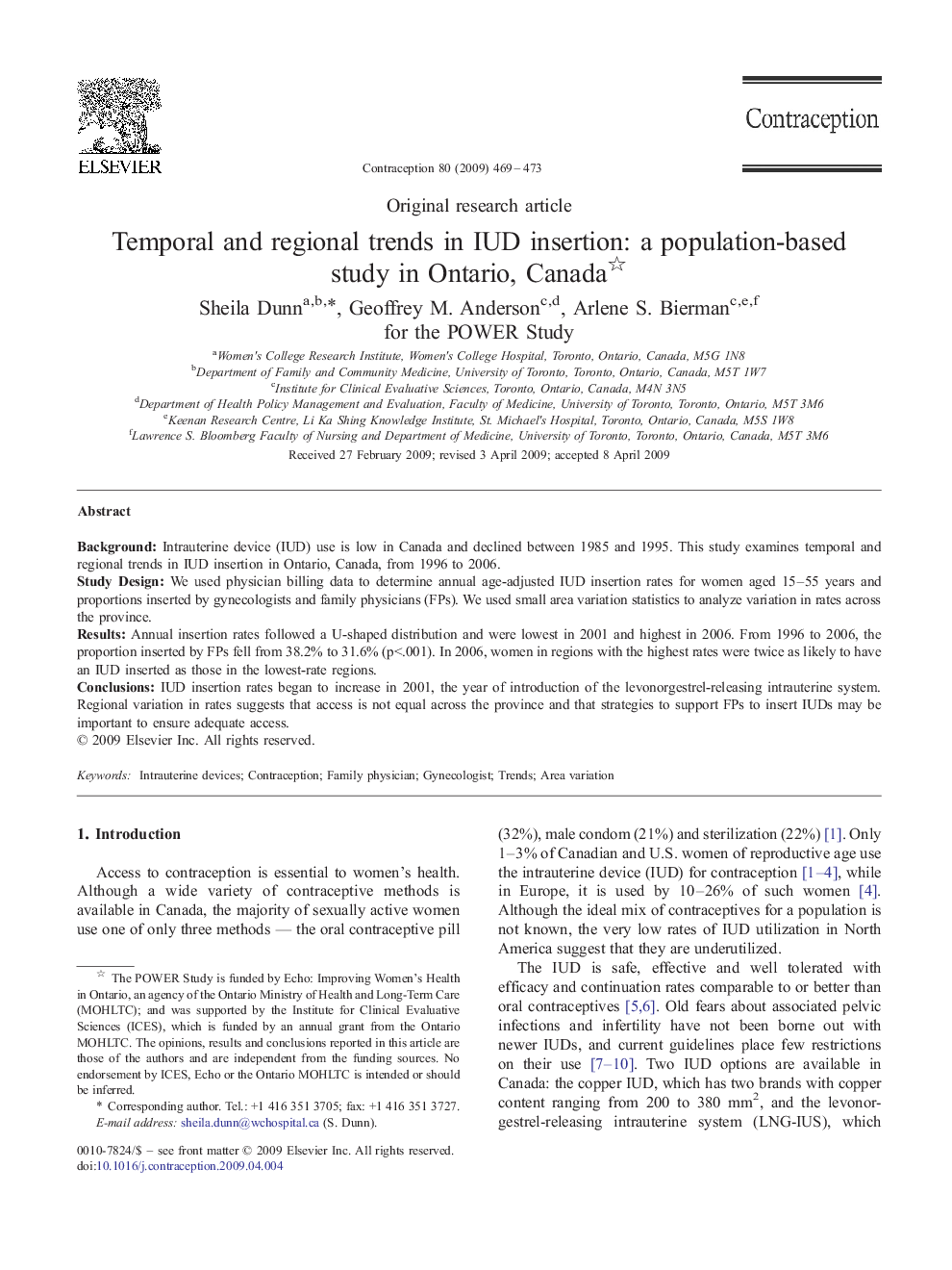| Article ID | Journal | Published Year | Pages | File Type |
|---|---|---|---|---|
| 3915308 | Contraception | 2009 | 5 Pages |
BackgroundIntrauterine device (IUD) use is low in Canada and declined between 1985 and 1995. This study examines temporal and regional trends in IUD insertion in Ontario, Canada, from 1996 to 2006.Study DesignWe used physician billing data to determine annual age-adjusted IUD insertion rates for women aged 15–55 years and proportions inserted by gynecologists and family physicians (FPs). We used small area variation statistics to analyze variation in rates across the province.ResultsAnnual insertion rates followed a U-shaped distribution and were lowest in 2001 and highest in 2006. From 1996 to 2006, the proportion inserted by FPs fell from 38.2% to 31.6% (p<.001). In 2006, women in regions with the highest rates were twice as likely to have an IUD inserted as those in the lowest-rate regions.ConclusionsIUD insertion rates began to increase in 2001, the year of introduction of the levonorgestrel-releasing intrauterine system. Regional variation in rates suggests that access is not equal across the province and that strategies to support FPs to insert IUDs may be important to ensure adequate access.
